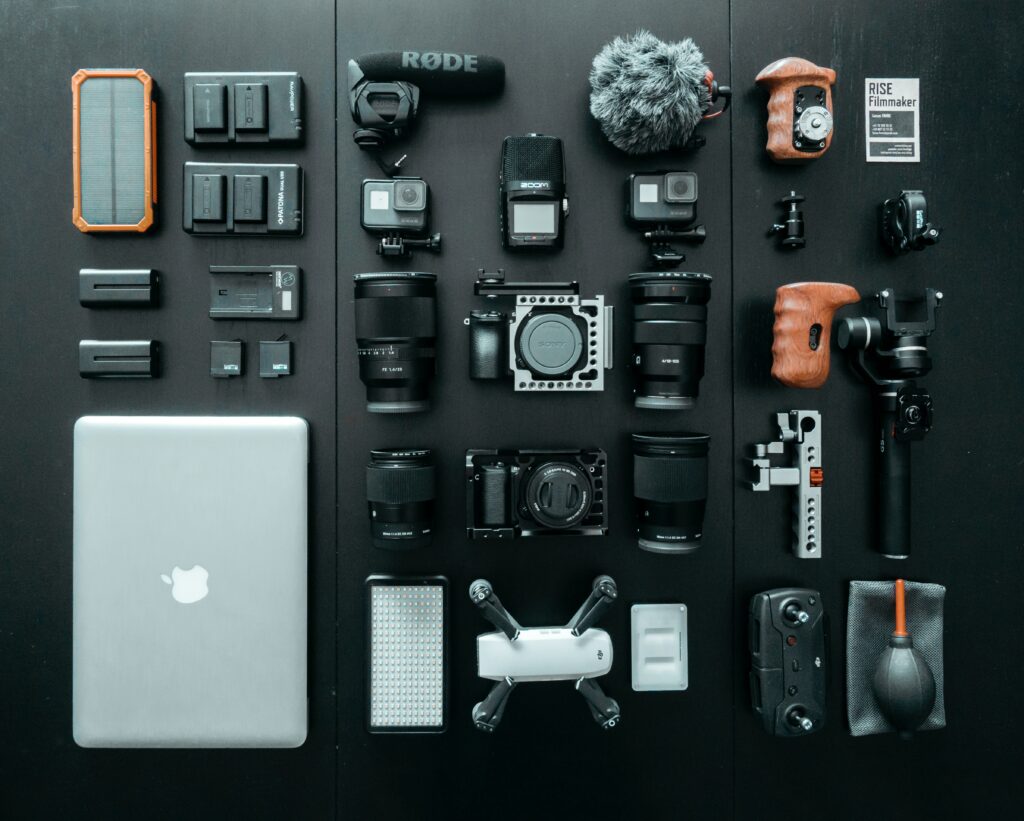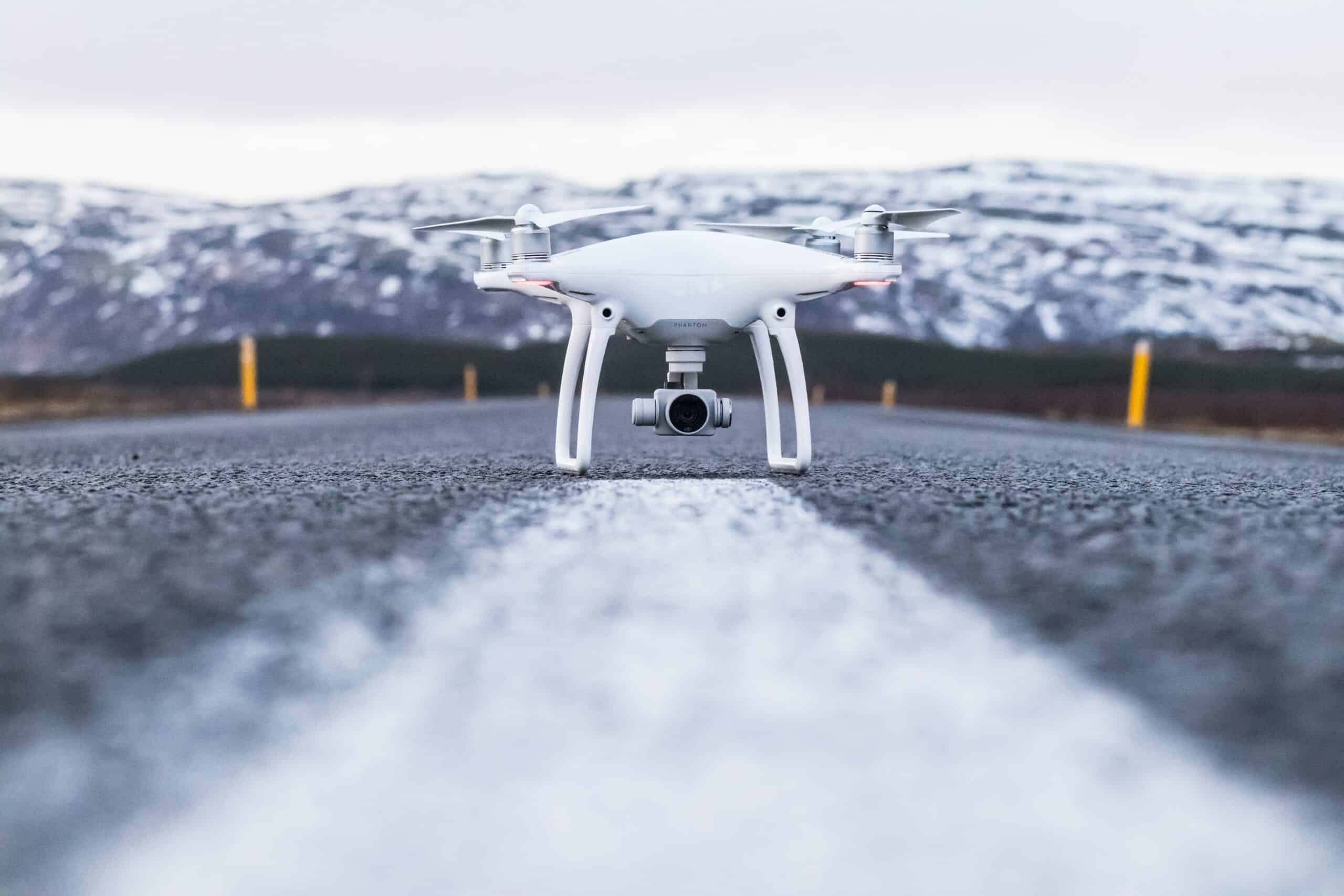A drone post-flight checklist is easy to use, can save you money, will help extend the useful life of your drone, and you can get one for free.
It is silly if you are not using one.
Let’s face it.
No one loves repeating a series of steps for safety checks.
They can be annoying, time-consuming, and tedious and serve to keep you away from drone flying, which is what you want to do.
But take it from us: a routine process of diligently going through your Checklist is the difference between a safe flight and a drone flying away.
In our experience, forgetting to check your settings after a firmware update or missing the power check is a sure way to increase your chance of crashing that drone.
Safety checks and regular use of drone checklists make for good drone ownership.
And this applies equally to the first-time drone flyer as it does to the professional who has flown hundreds of missions.
We know.
We have been there ourselves.
TLDR
Drone preflight and post-flight checklists are crucial for ensuring drone safety and compliance with local legislation.
This post intends to encourage and persuade novice and experienced drone pilots to embrace this simple and effective practice to ensure a safe flight experience.
As a drone pilot, you ensure safe and compliant flights while adhering to local rules.
Therefore, prioritizing safety is critical in drones. Including preflight and post-flight checklists in your routine is a tried-and-true way.
On this page, we focus on a post-flight checklist.
You should already be familiar with the preflight Checklist, which is critical and on which the post-flight builds to maximize your drone safety.
You can find our discussion of the importance of a preflight check and preflight Checklist here: Drone preflight Checklist.
Please note that while these recommendations focus primarily on the Federal Aviation Administration (FAA) requirements, they equally apply to the UK Civil Aviation Authority, the EASA, which governs European drone flights or other regulators in other jurisdictions worldwide.
The primary difference is the drone regulation scope under which you will operate.
In other words, the drone checklist is a universal concept worthy of every drone flyer’s attention.
The Art and Science of Drone Preflight and Post-flight Checklists
Before each flight, every commercial drone operation must use a checklist template to confirm that everything is in working order.
The safe operation and upkeep of your drone systems are crucial. You can’t afford to ignore diligent safety checks if you don’t want to jeopardize your license, equipment, or the entire firm.
If you do not follow the proper procedures to eliminate risk and uncertainty, you’ll waste time and money trying to determine what went wrong.
Furthermore, pilots must comply with safety standards and use the proper technique for safe, intelligent drone operation.
These checklists will guide you through a comprehensive list of typical problems and preventative steps to ensure you do everything possible to limit risk and streamline your flight procedure.
Ultimately, this approach can mean the difference between a successful operation and a disastrous mission failure.

Preflight Checklist: Your Key to Safer Drone Flight Readiness
A preflight checklist is a roadmap to ensure your drone is in good condition and ready for a safe flight.
By following this crucial step, you can identify and rectify any potential issues before takeoff, preventing incidents and ensuring the safety of everyone involved.
Post-flight review – the Key to Longer Drone Life
A post-flight checklist is a wrap-up guide for ensuring your drone is in good condition and ready for the next flight.
By following this additional step, you can identify and rectify any potential issues during your flight, identify any needed maintenance, and prepare your drone for safe transportation and storage in a way that makes it more readily useful for the next flight.
Post-flight Checklist: Safeguarding Your Drone for Future Flights
Post-flight checklists are just as vital as their preflight counterparts.
While a preflight inspection determines the drone’s readiness, a post-flight review ensures that everything is in working order, uncovering any issues that may have arisen during the flight and preparing the drone for its next mission.
They are so vital that we created a printable checklist that includes both.
We use these checklists religiously for every one of our drone flights.
The Cornerstones of a Drone Post Flight Checklist
At this point, we assume you have safely landed your drone, it is at ground level and stable, and you have powered down the craft.
Create a log and record the basic flight planning details.
To ensure compliance and general responsibility, you should keep basic details about the drone and the person who operated it on file.
We don’t need to add this information again to our post-flight Checklist because it is recorded for our preflight Checklist in the same document.
However, if you create your post-flight Checklist distinct from the preflight Checklist, then here is what you should include –
You should maintain a flight log with essential information regarding the drone and who piloted it on file for the benefit of compliance and general responsibility. You should, at the very least, include the following:
- The pilot’s first and last names
- FAA identification number
- Flight date and location of the flight
- Name and model number of the drone
- Drone identification number (serial)
- Drone mass (kg)
- Any specific payload
- Add relevant weather notes, including wind speed
- Additional notes
Record your purpose for the drone flight.
Accurate records of flight objectives are essential for compliance.
A procedure incorporating this information might lead to usable datasets later on.
Explain the entire scope of flight operations.
Please save a copy of your flight plan consistently (we use project, location, and date for our naming conventions).
Save a copy of your actual flight path if you can.
Ensure that your drone controller is powered down.
You’ll want to turn off your smart controller before anything else to prevent problems with the configuration between the remote controller and the drone.
Then, continue with the Checklist only after completely shutting down the control unit.
Check that your drone controller battery is disconnected and stored safely.
Remove the controller’s battery pack after completely shutting down the controller, and place the battery somewhere safe to cool down.
Exercise caution when handling the battery because if the pack is defective or damaged, overheating may occur during the flight.
Check the batteries’ temperatures after disconnecting to ensure they are within a safe range.
Usually, you can tell if the batteries are overheating by feeling the heat they emit with your hands.
Still, just in case, measurements should be taken as part of regular maintenance checks, even if the batteries seem to be in good condition.
Your LiPo battery pack functions best at about 59 degrees Fahrenheit.
Therefore, you can typically check the temperature of the batteries in your drone unit.
Still, not all of them will include the remote controller’s battery.
You will require an outside tool for this.
You should not use the packs again if they are overheated or damaged; instead, they should be recycled or properly disposed of and replaced.
If the battery is damaged, add a note to your Checklist and ensure that the battery is replaced before the next flight.
We know that battery life is relatively short to begin with.
However, with poor usage, storage, and cycling, you can dramatically reduce the number of flights you can get with a battery pack.
Following the manufacturer’s instructions, store your battery safely. Proper storage and power cycling techniques will increase the lifetime usage of your battery.
Power down your drone and stop all the motors.
It’s time to power down the aircraft after the controller and related modules have been turned off.
Depending on your model, the precise procedure for turning off your drone will vary, so always check your manual first.
Most drone models typically find the on/off switch on the battery pack or the chassis’s bottom.
Wait for all indicator lights to dim before fully turning off the power.
There are built-in joystick commands to start and stop the motors on many DJI drones (DJI Mavic, Mavic Air, and DJI Phantom, for example).
Once the aircraft has landed, one entails pushing the left stick down. At the same time, the Combination Stick Command is used to stop and start the aircraft motors in an emergency.
Your drone manufacturer may have a similar power-down system.
Check the manual and use the recommended steps to power down your drone safely.
Ensure all motors are no longer spinning.
Disconnect the drone battery, allow it to cool, and store it safely.
Before accessing the battery pack, ensure the drone motors are entirely stopped.
Next, disconnect the drone battery and take out the battery pack.
Make sure it doesn’t get too hot, just like with the controller battery.
Then, like how you measured the controller’s temperature, check the battery packs’ temperatures.
Do not use the packs again if they are overheated or damaged; instead, they should be thrown away and replaced.
Just as with the controller battery, if the battery is damaged, add a note to your Checklist and ensure that the battery is replaced before the next flight.
Similarly, store your battery safely following the manufacturer’s instructions.
Some manufacturers recommend you discharge batteries before storage.
Check the instructions.
Proper storage and power cycling techniques will increase the lifetime usage of your drone battery.
Allow motors to cool.
Check the temperature of the motors below the propellers using the same technique as for the battery packs.
To make sure that parts are replaced when required before a flight, you should include the temperature of each electronic component in your routine maintenance and repair checklists.
Generally, you can anticipate that motors will be warm to the touch but not unbearably hot.
Healthy engines will operate at lower temperatures under an anticipated load than batteries would under typical circumstances.
Always ensure the motors’ temperature is within a safe range, and keep in mind that both the temperature of the motors and the battery packs can be impacted by load weight, flight time, and ambient site heat.

Inspection of Drone Components – Inspect drone components for visible damage.
The drone might have sustained damage during the previous flight. Inspect each part for tiny cracks or other visible wear and note whether any repairs are required.
You should check the following at minimum:
- The Drone Chassis
- All drone motors
- Drone landing gear
- All Propellers
- Any gimbal, if one is used
- Indicator lights and LED lights
- The GPS antenna and system
- The Compass
- Batteries used on the controller, drone, and any other powered system with an independent power source
- Electronic Speed Controller
- Attachment Screws
- Exposed or visible Wiring
- Camera
- Any payload and attachments
Clean your drone unit.
Wipe down your drone with a cloth or rag to eliminate any built-up debris from the flight.
Bugs and other organic matter can easily cause issues when the unit is not adequately maintained.
Regular drone maintenance is crucial to ensuring its longevity and performance. Therefore, we recommend following the manufacturer’s instructions for cleaning and inspecting the unit after each flight.
Remove and secure any payload.
Your drone might have carried a specific payload besides information, so the load must be unmounted and transported correctly.
Ensure that nothing is left behind after demounting that could prevent the drone from being stored properly.
Prepare your drone for transport and storage.
It’s time to prepare the drone for its upcoming operation after thoroughly inspecting each component and carrying out any necessary checks.
You will need to carry out specific tasks, like removing a payload or transferring data, and determine whether the drone needs to be stored for transportation or set up before a back-to-back operation.
Manage flight data and secure the collected data.
To process and/or archive data collected during a flight, it must be downloaded, backed up, or transferred to a secure location.
There are a few different ways to accomplish this. Still, the drone will almost certainly have a removable SD card (memory card) that you can attach to a computer.
Check all pertinent manuals and documentation to ensure best practices are being followed. Your unit’s control system may offer wireless transfer services.
If proper transfer protocols are not followed, data corruption might happen.
Address concerns raised from previous operations.
You should address immediate concerns and outstanding issues, such as damaged or missing equipment, public complaints, operation-specific problems or difficulties, and all matters not addressed by the current safety procedure, by reviewing your flight data and drone operators’ experience from the recently completed and previous field operations.
Best Practices for Utilizing Drone Safety Checklists
To maximize the effectiveness of your drone preflight and post-flight checklists, it’s crucial to adhere to the following best practices:
- Consistently use the same checklists for each flight. This habit will help ensure you do not miss steps and follow all necessary safety procedures. Additionally, ensure that all operators are trained on the checklists and understand their importance in maintaining compliance with regulations and ensuring safe drone operations.
- If drone regulations require, include any additional steps specific to your operational waiver. Remember that drone regulations change frequently, and always check the Federal, State, and local laws before embarking on your flight.
- Familiarize yourself with and comply with the specific regulations governing the airspace in your locality. Check the NOTAM and review the planned flight location using a current FAA-approved drone mapping application to verify there are no limitations to conducting flight in this location.
- Update your checklists regularly to accommodate changes in regulations and technology.
Finding Drone Preflight checklists and Post-flight checklists
Several online sites provide downloadable versions of a drone preflight checklist or a post-flight checklist.
You can find many of them through a Google search. However, we are happy to point you to the one we use.
We like it because it is comprehensive and includes pre- and post-flight checklists in a single document.
You can get a free copy below:
Free Drone Post-flight Checklist PDF
Our Drone Flight Checklists are better than others. It’s free and includes both the preflight Checklist and post-flight Checklist in one easy-to-use printable PDF that covers all your bases.
Conclusion: Embrace the Power of Flight Safety Checklists
A Drone Preflight Checklist and post-flight flight safety checklist are efficient and effective ways to guarantee drone flight safety.
Drone pilots can use these checklists to find and fix problems before takeoff and ensure everything is in working order after landing.
Using these checklists, you can lessen the possibility of an accident and ensure your safety during drone operations.
In our experience, the best drone safety checklist is the one that you use regularly.
If our version or another online version doesn’t fit your needs, we sincerely hope you will create your own and use it.

Brad Nichols
Partner
30 plus years focused on mission-critical technology and operations

Tom McKeefery
Partner
Transformation, Technology, Supply Chains, and Operations
